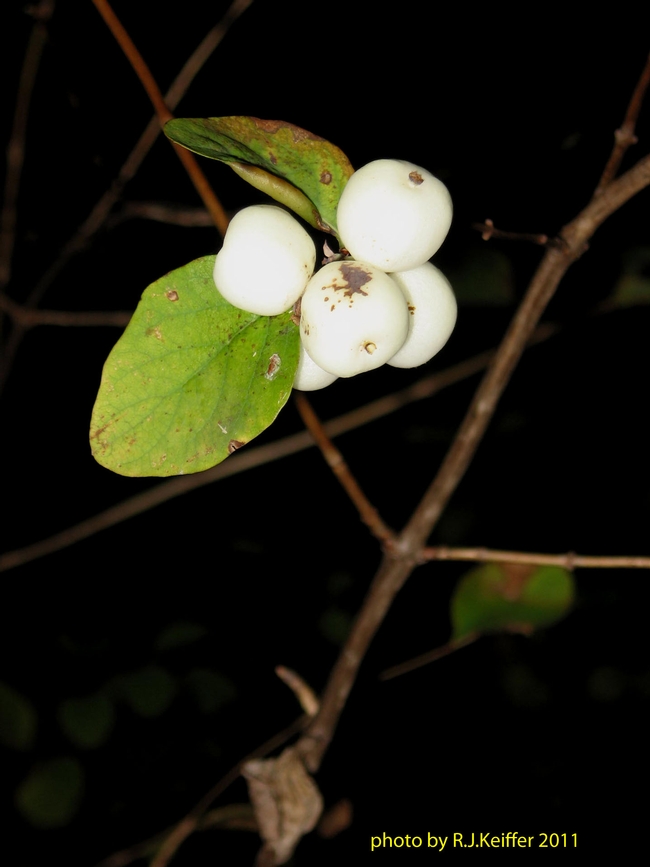As fall fades away and winter says hello the leaves of deciduous trees and shrubs fall and the landscape colors change to grays and browns. But, in this drab landscape, a close look along streambanks and shady canyon understories within the mixed evergreen forest, yellow pine forest, and foothill woodlands one will find shimmering beads of white. The Snowberry (Symphoricarpos albus (L.) variety laevigatus), or Common Snowberry, is a shrub that grows up to a meter tall. It is common throughout California and the western U.S. The fruit, a snow-white berry, hangs singly or in clusters long after the leaves drop, thus enhancing the drab understory with glistening pearls of white.
The shrub spreads freely from rhizomes and often forms dense thickets. The bitter fruits are toxic when eaten in quantity due to the saponins within. However, saponins (also found in certain beans) are not easily digested or absorbed through the intestinal wall of humans, so one would have to eat many pounds of berries before toxic symptoms would show. Lesser consumption can lead to vomiting and diarrhea though.
Historically, certain Native Americans used large quantities of snowberries and placed them into small streams to stupefy or kill fish. It is the host plant for caterpillars of the Snowberry Clearwing moth (also called the bumblebee moth) and the Colon Checker Spot butterfly. It can be a good landscaping plant to plant underneath oaks and can be pruned to form hedges.
